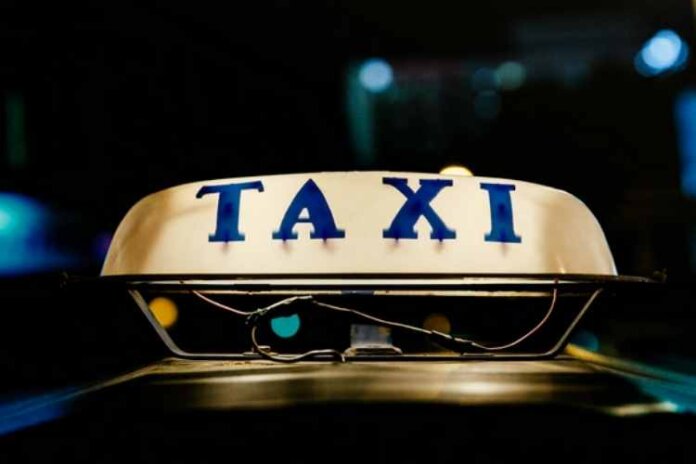
There has always been a need for humans to get from place to place by vehicle. We can’t fly, we can’t run very fast, and we can’t swim very effectively, making us one of the most immobile animals on the planet.
So we invented ways to get us around places. The introduction of cars was in the late 1800s, but carriages and other means of transport were being used well before that.
Buying your vehicle has always been too expensive for many people, so taxicabs and other vehicles for hire have been around for a long time. It can be a little confusing and even scary for both parties involved when a stranger hops into someone else’s vehicle, but it’s part of the fabric of pop culture.
Rideshare services like Uber and Lyft have taken advantage of the smartphone era to expand on the original intent of taxicabs, but that’s the modern stuff we already know about.
We’ll discuss the history of the taxicab, including how people decided they wanted to get engaged in rideshare, how the vehicles are insured, and whether the taxi business will continue to evolve in the years to come.
The Early Years of Taxi Services
As we already mentioned, taxi-type services have been around for centuries before the invention of the motorized vehicle. People created businesses where they would chauffeur passengers around the city in a horse-drawn carriage for a fee going back to the 1600s.
Countries in Europe were the location spots where most of the modern taxis started to come into circulation. It wasn’t until after 1900 that the U.S. started becoming a factor in creating and using taxi driving.
Gas-powered taxis were put into service shortly after the invention of the modern motor vehicle in the late 1800s, and companies like Ford started servicing their taxicabs in the 1920s. Why did big car companies want to get in on the taxi action, though?
Taxi services are popular because of the great convenience and affordability that it gives folks who don’t own their own cars but still need to get from one place to another.
That doesn’t mean there aren’t drawbacks to this business, though, for both the driver and the passenger. We will look at some scenarios that go awry when talking about the use of taxis throughout history.
The Risks of Taxi Services
Getting into a car with a stranger always gives the potential for a frightening experience. Driving is one of the most dangerous activities, and putting that responsibility in the hands of someone you don’t know can create a lot of reservations and paranoia.
People started pretending to be taxi drivers in the early 1900s, taking away customers from the actual taxi services and creating a situation where the customers did not know who to trust when they needed a ride around town.
Many of the prominent taxi companies and the car manufacturers that worked with them started to mark their taxicabs with logos and bright yellow paint, creating the iconic look that still stands today. When you see a yellow cab, you can trust that it will be driven by an actual taxi driver, not someone trying to steal a cheap buck from someone.
Ridesharing companies like Uber have had difficulty absolving some of their workers of assault and harassment toward their customers, leading to more restrictions and training before getting the job.
Drivers also have to worry about who is getting in their car. The fact that many Uber drivers are driving their vehicle puts their livelihood at risk more than a taxi driver who gets to use a company car to do his job. Uber drivers almost have no way of disconnecting their work transportation from their casual ride.
It should be noted that many of the food delivery services for ridesharing apps have provided company cars for their drivers now.
The Future of Taxi Services
Taxis are still used in modern culture and lifestyles. Still, they have been upended by introducing ridesharing apps on smartphones that have revolutionized the industry, mainly Uber and Lyft. These companies are known for hiring independent drivers who are willing to drive their own cars for the company.
Uber has turned into one of the biggest companies in the world and is a symbol of the technological changes in the world today. Their intent has ranged from getting people where they need to go to transporting larger parties than taxies do.
They are also famous for their business focusing on food delivery services, eliminating jobs that would originally go to workers that used to drive for the restaurant.
There are ways that taxi companies have tried to stay relevant in the age of Uber. Taxis are a reliable way to get around in the New York City area, and drivers must take added safety measures and defensive driving courses to get their job. Uber has less stringent restrictions and qualifications for their drivers, leading to the previously mentioned fears of riding in one.
The company that can be more aware of its shortcomings will do the best job transforming in the future. The market will always need rides for people who don’t own cars, but people don’t want to feel like rideshares are ignoring their shortcomings, such as expense and safety.
There has always been a need for alternative transportation, though, and we should plan on that to continue.
We can expect that taxis will continue to evolve in the future. Some day another company or innovation will come along that will force ridesharing apps to adjust their market strategy. Or perhaps Uber will continue to be the ones doing those innovations, forcing the taxi industry to complete obsolescence. One thing is for sure: We will never run out of options for a ride.











